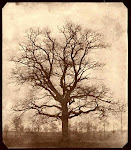An ancestor's occupation as described in a vellum
Indenture:
Mortgage of 130 acres of marshlands and premises situate in
the Level of West Maytham in the Parish of Rolvenden, Kent for securing £250 at 5 per
cent dated 17 July 1705, Thomas Sharpe, Linen
Draper of the ancient town of Rye, Sussex, to Mrs Elizabeth Collington
Draper: originally a term for a retailer or wholesaler of cloth that was mainly for clothing; dealer in fabrics
~ ~ ~
































